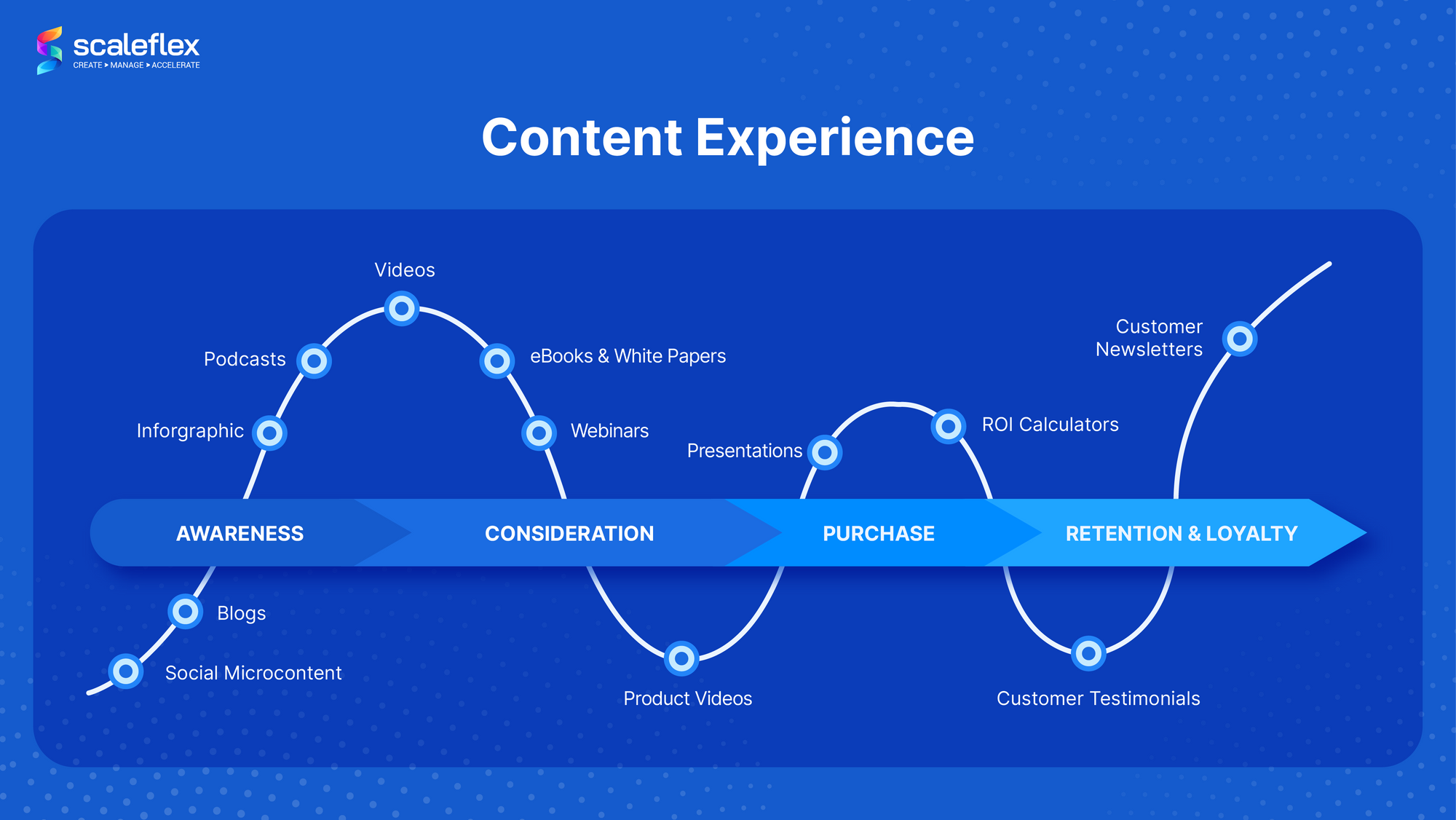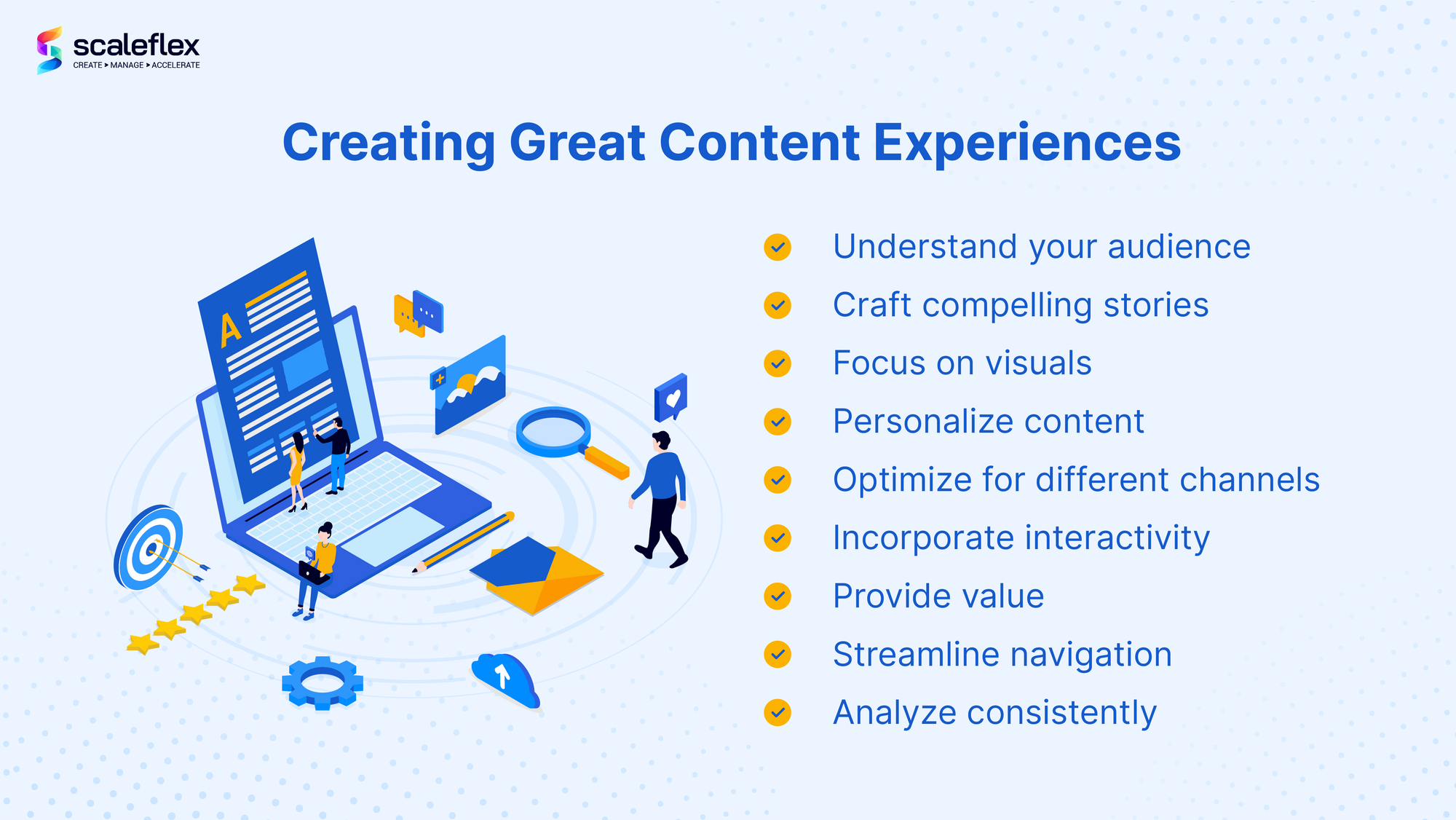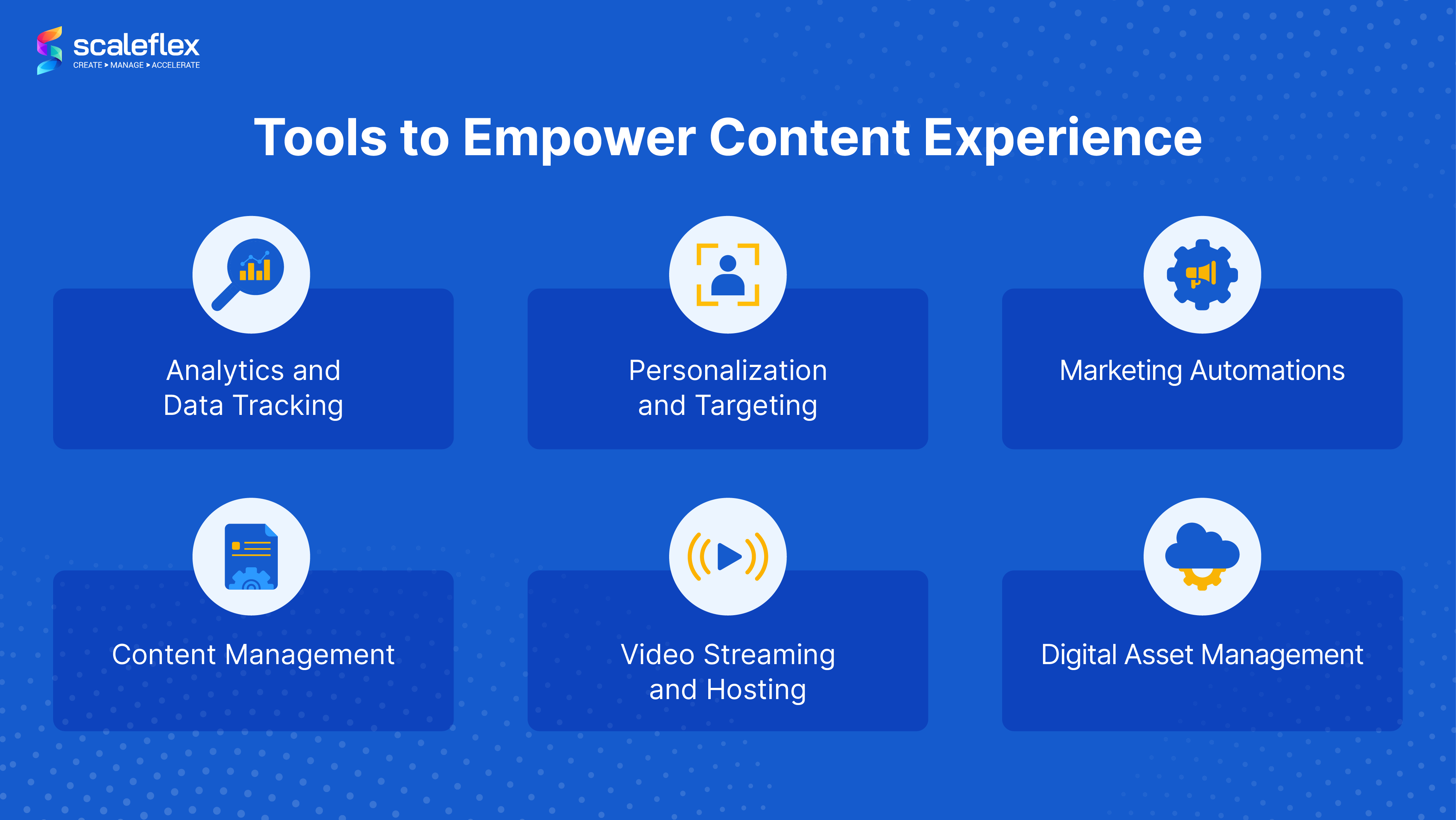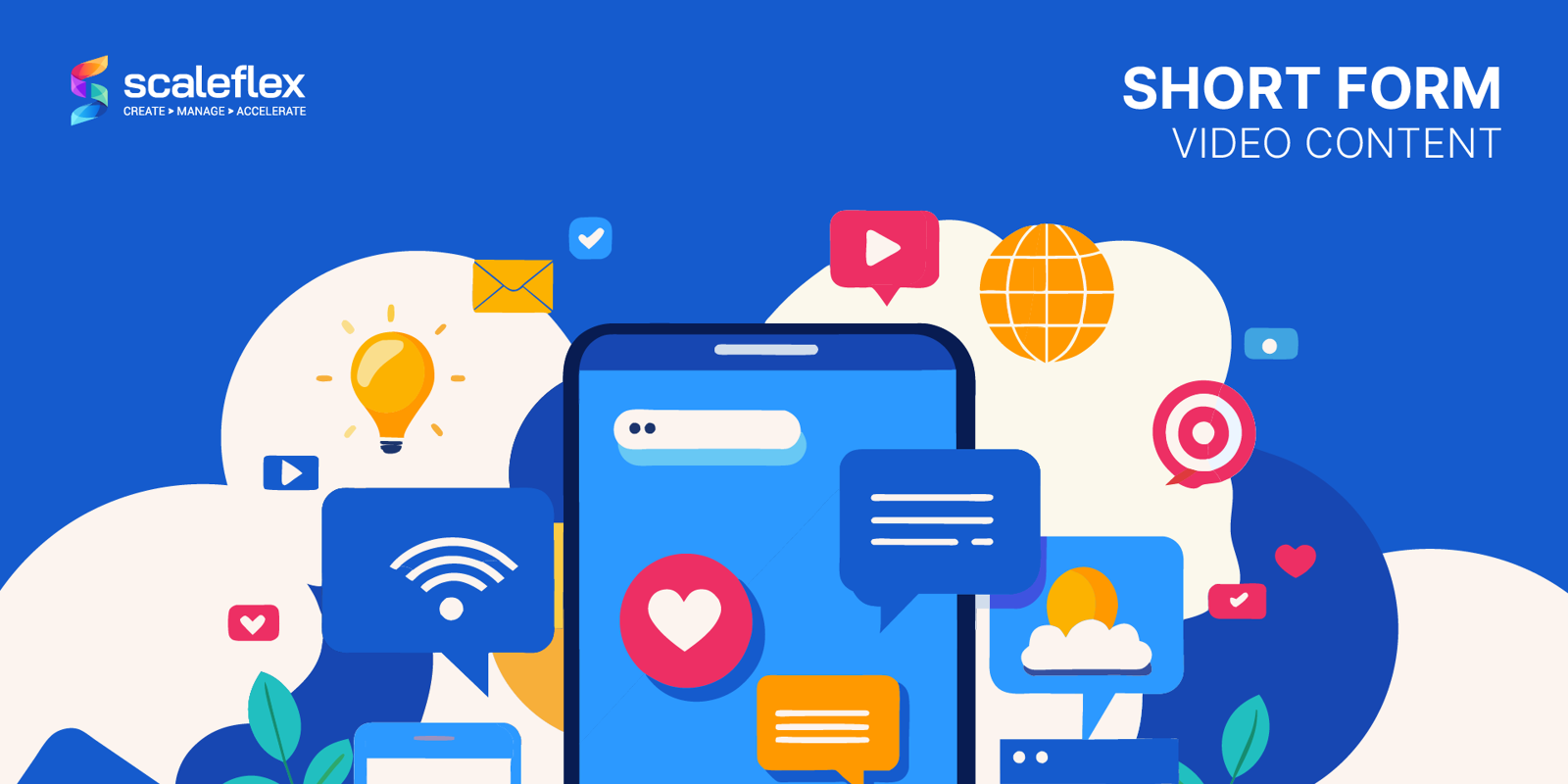Transforming Your Content Experience: Unlocking Growth Opportunities
Content’s everywhere - and in fact, 2.5 quintillion bytes of data are generated across different digital channels every single day. But with all this content, then comes another challenge of brands finding ways to captivate the prospective customers’ attention.
That’s why simply creating and publishing content is no longer enough. To truly stand out and achieve remarkable results, organizations must focus on crafting memorable content experiences that captivate their audience.
In this blog post, we will explore the concept of content experience and its significant impact on ROI. We will delve into strategies, best practices, and innovative approaches to help businesses unlock growth opportunities.
What is content experience?
Content experience is the cornerstone of modern-day marketing. It is the culmination of a user’s interactions with your digital material and their perception of it. It combines both content and context and is the art of creating captivating journeys for your audience. This journey unfolds across various devices, platforms, and channels, guiding the prospect towards becoming a valued customer and where every interaction leaves a lasting impression. Throughout the content experience, content is produced consistently and strategically, with the primary objective of increasing audience engagement and driving desired actions.
The easiest way to think about it is instead of having isolated pieces of content that individuals consume independently, the content experience is about content that flows seamlessly from one unit to the next, ensuring a logical progression that propels the message recipient along the marketing funnel.
Each piece of content can be seen as a component of a large, individually consumable experience that also makes a distinctive contribution to a collective experience that is more than the sum of its parts.
Gone were the days of branded content as today’s content experience has become increasingly digital and multichannel, leveraging the contributions of various participants, including user-generated content, to enhance brand conversations. Companies now don’t just want to use content to sell their products and services, but they also want prospects and customers to experience their company.

A successful content experience then necessitates a cohesive and unified brand presence across all touchpoints. It extends beyond individual interactions with specific pieces of content, aiming to establish lasting engagement with audiences over time. By fostering a consistent brand experience, the content journey becomes an ongoing dialogue that evolves with each interaction, extending beyond a single encounter with a singular content piece.
What’s the difference: Content Experience vs Content Marketing?
In digital marketing, these two terms often find themselves intertwined. While content experience and content marketing revolve around creating and delivering content, they possess distinct characteristics and serve different purposes.
Marketers will know how important it is to craft compelling narratives, visually stunning content, and seamless interactions that resonate with your target audience. Imagine the impact of a well-crafted blog post that educates, sparks curiosity, and engages readers. Visualize the power of a captivating video that tells a story, evokes emotions, and drives action.
Content marketing focuses on the content lifecycle - creating, distributing, and promoting valuable and relevant content to attract and retain a target audience. It is a strategic approach that aims to educate, inform, or entertain the audience, building brand awareness, establishing authority, and ultimately driving customer action. The primary goal of content marketing is simple: to deliver content that resonates with the target audience, addresses their pain points, and provides valuable solutions.
Content experience, on the other hand, extends beyond individual content pieces and focuses on the holistic journey and interactions users have with a brand’s content. It encompasses the overall experience, emotions, and impact created throughout the content consumption journey.
Yet, these two concepts are not mutually exclusive. In fact, they are closely interconnected and work hand-in-hand to create impactful marketing strategies. Just think of content marketing laying the foundation by providing valuable content assets that educate, entertain, and attract the audience, and content experience takes this valuable content and transforms it into an immersive journey that captivates and leaves a lasting impression. In unison, it elevates the impact of content by considering the overall user experience and leveraging various elements to create a cohesive and memorable brand interaction.
How to create great content experiences?
We’ve covered how important crafting great content experiences is, but how do marketers do so? This section will cover some essential elements of creating great content experiences. By implementing these strategies, you can create exceptional content experiences that captivate your audience, drive meaningful engagement, and boost your brand’s success in the digital landscape.

- Understand your audience: Marketers will need to start by researching and understanding their target audience’s preferences, pain points, and interests. This knowledge can help tailor your content to your audience’s needs and preferences, making it far more relevant and appealing.
- Craft compelling stories: Storytelling is a powerful way to connect emotionally with your audience. Create compelling narratives that resonate with your audience and evoke emotions, whether it’s through blog posts, videos, or social media content.
- Focus on visuals: High-quality images, videos, and graphics can enhance the content experience and leave a lasting impression. Marketers should invest in appealing content that aligns with their brand identity and captures their audience’s attention. On the web, every second counts. As such, the best images, videos, and graphics will only be fully experienced when they are optimized and fast.
- Personalize content: This is where data and analytics come into play to help you personalize your content based on user behavior and preferences. Doesn’t an email that addresses you by name makes you feel much better and valued?
- Optimize for different channels: Today, your audiences may consume content on different channels, such as social media, websites, or email. Tailoring your content for each platform helps to deliver a seamless experience.
- Incorporate interactive elements: Rather than just static content on the internet, having interactive content such as quizzes, polls, and surveys can encourage participants, boost user engagement, and create a more immersive experience.
- Provide value and utility: Content that offers value and utility is key. Be it educational blog posts or informative videos, valuable content positions your brand as an industry authority and builds trust.
- Streamline navigation: User experience is vital for crafting good content experiences. Your website and app need an intuitive and user-friendly navigation structure, making it easier for visitors to find relevant content and explore more of your offerings.
- Analyze regularly and consistently: Analyzing your content performance, user feedback, and audience behavior to make data-driven improvements is vital to stay relevant and provide your audiences with the best possible experience.
What tools or content experience platforms do you need?
To create exceptional content experiences, you must consider if you have the right tools to empower your team and streamline your content operations. These are some recommended solutions to consider.

Analytics and Data Tracking Tools
Before you can do anything at all, you’ll need data. Analytics platforms help you measure the performance of your content experiences. Google Analytics can be a good starting point for websites that can help you track key metrics like engagement, conversion rates, and user-behavior so that you can fine-tune your content strategy for better results.
Personalization and targeting tools
Personalization tools use data to deliver tailored content experiences to individual users. They allow you to use data segmentation to divide your audience into distinct groups based on common characteristics and can use machine learning algorithms to recommend relevant content to users based on their past interactions and preferences.
For example, an email newsletter sent to your prospects could be drafted differently than one sent to your current customers. The content goal for e-commerce prospects could be for them to buy your product for the first time, including promotional events and discounts. However, for your customers, include loyalty program information or personalized vouchers to get them to make the next purchase.
By segmenting your audience, you can recommend content that addresses specific needs and interests, effectively reaching each segment with relevant messaging.
Marketing Automation Platforms
Once you personalize and target the right audience, the next step is to do this consistently and automatically. Here’s where marketing automation platforms can help automate and streamline these content experience journeys.
You can automate lead nurturing workflows or drip campaigns to send out content for that particular prospect or customer based on specific criteria. For example, an automotive marketplace prospect looking for a used car might be interested in other types of second-hand cars. You can automate a list of top used car listings as recommendations if action has yet to be taken in the next week to re-engage them.
Content Management System
A robust CMS is essential for efficiently publishing, editing, and updating your content across various channels. Look for a CMS that offers user-friendly interfaces, easy content creation and customization, and seamless A/B testing. This allows you to experiment with different content variations to identify what resonates best with your audience.
Video hosting and streaming platforms
As video content is a powerful medium for storytelling, you’ll need to use good video hosting and streaming platforms to ensure smooth playback, video optimization, and compatibility across different devices.
Some good-to-have features of such platforms include:
- Seamless video playback
- Customizable video players
- Adaptive streaming
- Analytics and insights
- Interactive video features
- Mobile responsiveness
- Live streaming capabilities
Digital Asset Management
With all the different types of content: images, videos, PDFs, for other channels and are highly personalized, you’ll need an effective way to organize, store and manage your digital assets. A DAM solution enables easy search and retrieval of assets, ensures version control, helps in rights management, and facilitates seamless collaboration among team members. We can’t stress how important it is for content to be managed well!
Some DAMs also offer analytics features providing insights into asset performance, usage trends, and user engagement, which are vital to creating great content experiences.
When searching for the best DAM system for your organization, look for one that offers integrations with other marketing and content management tools like those discussed to have an all-in-one place for your digital assets.
Scaleflex’s Filerobot Digital Asset Management is a powerful software built on MACH Architecture. That means you can integrate them easily into your current technology and marketing ecosystem, allowing them to work seamlessly to create a better content experience for your target audience.
Key Takeaways
In the ever-evolving digital marketing landscape, content experience has emerged as a powerful catalyst for unlocking growth opportunities. By shifting our focus from traditional content marketing to elevating that same content (with a few tweaks) to create exceptional content experiences, your businesses and brand can better engage your audiences, build meaningful relationships, and drive conversions.
The future of content is experience-driven, and embracing such a customer-centric approach and leveraging the right tools and technologies can help you craft seamless and personalized content journeys that resonate with our target audience.
Start your content experience journey today by organizing and managing your digital assets with Scaleflex. Speak to our DAM experts to learn more.





